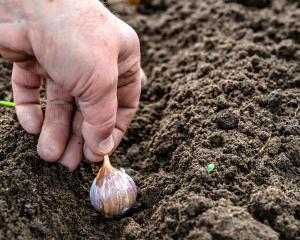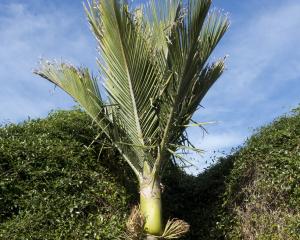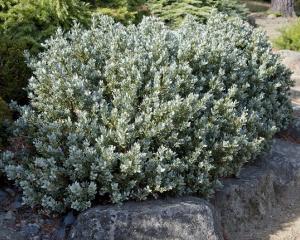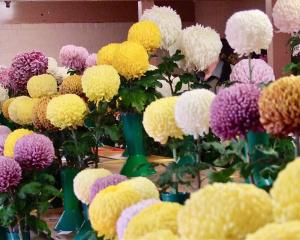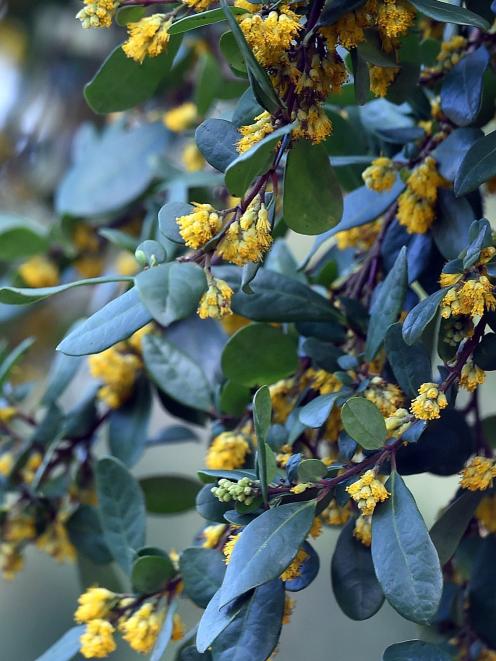
The leaves appear in an unusual pattern along the stems, which is an interesting characteristic of this genus. Pairs of differently shaped leaves are arranged alternately along the stems though the smaller leaf of the pair is not a true leaf but a leaf-like stipule.
In late winter or early spring an abundance of dainty yellow flowers appears. The small fragrant flowers have no petals but rather display a conspicuous bunch of long bright yellow stamens
Probably the most well-known of the Azara species is the sweet-scented "vanilla tree", Azara microphylla, native of Chile and Argentina. In early spring the scent of A. microphylla fills the air with a sweet enticing vanilla-like fragrance emanating from its small yellow flowers. The name microphylla describes this species’ small leaves. Azaramicrophylla "Variegata", a yellow-variegated cultivar of the vanilla tree, is also popular in gardens, though less hardy than the true species.
The lesser-known species in this genus also provide interest and charm to the garden. Azara integrifolia, native to Chile, has lush evergreen foliage, larger oval leaves and puts on a stunning showy display of yellow flowers in late winter.
Azara dentata and A. serrata are also grown at the Botanic Garden showing off their glossy green leaves with toothed margins in the South American borders to good effect.
Azara are on display throughout the Botanic Garden.
Garden life is produced by the Dunedin Botanic Garden.
For further information contact Kyla Mathewson.


